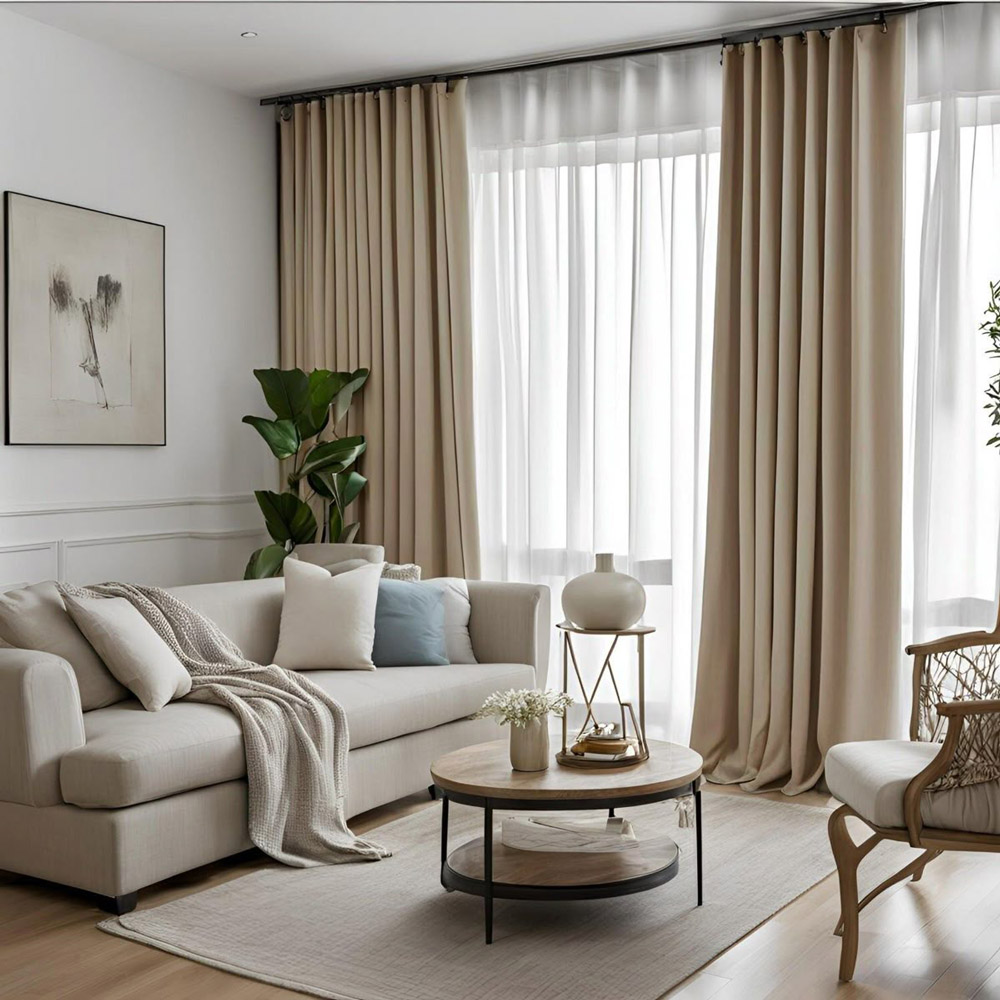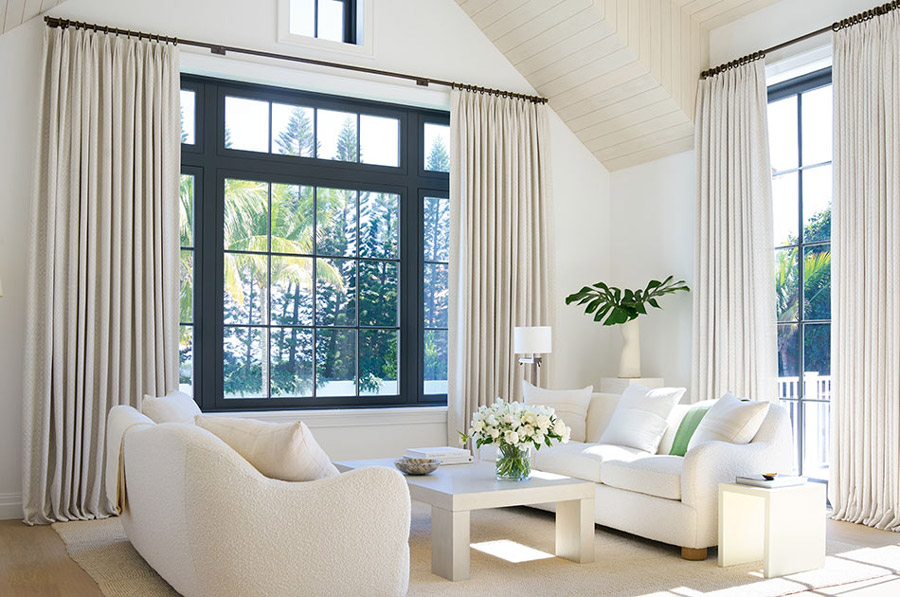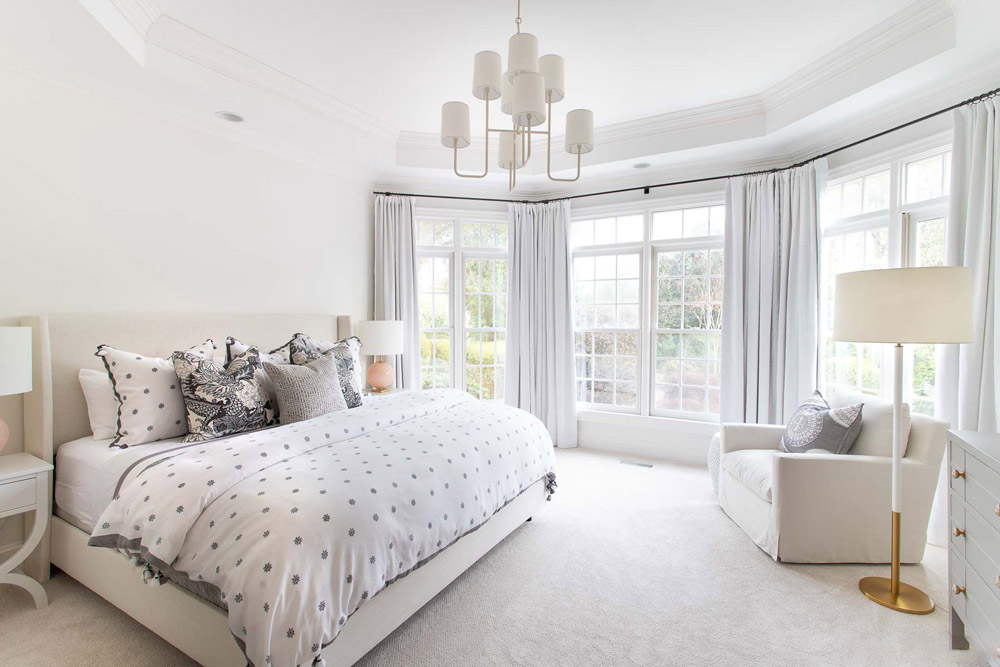Curtains are more than just decorative pieces—they shape how a room looks, feels, and functions. When hung properly, curtains can make your ceilings look higher, your windows appear larger, and your entire space feel more refined. Yet, many people make common mistakes that lead to awkward proportions, poor lighting control, or even a cluttered appearance.
This guide walks you through the essential rules for hanging curtains the right way—covering measurements, placement, styles, and tips to avoid costly decorating errors.
Contents
- Why Proper Curtain Placement Matters
- How High Should You Hang Curtain Rods?
- How Wide Should Curtain Rods Extend?
- How Long Should Curtains Be?
- Curtain Width and Fullness
- Choosing the Right Curtain Hardware
- Measuring Windows Correctly
- Design Tips: Matching Curtains to Your Space
- Common Mistakes to Avoid
- Pro Tips for Hanging Curtains Like a Designer
- Frequently Asked Questions
- Conclusion
Why Proper Curtain Placement Matters
Hanging curtains correctly enhances both the functionality and visual harmony of a room. Beyond aesthetics, well-placed curtains regulate light, protect furniture from sun damage, and provide essential privacy.
Improper placement—such as hanging rods too low or using curtains that are too short—can make a space feel smaller and less inviting. On the other hand, when done right, curtains can elevate a room’s overall design and create a sense of balance and symmetry.

How High Should You Hang Curtain Rods?
One of the most impactful decisions is how high to place your curtain rod. The general rule is to hang the rod 4 to 6 inches above the window frame. This helps draw the eye upward, giving the illusion of taller ceilings.
In rooms with high ceilings, or when trying to make a small room feel more expansive, consider mounting the rod even closer to the ceiling—up to 12 inches or halfway between the frame and ceiling.
Avoid the mistake of installing the rod right above the window casing, as it can make your window and the entire wall appear shorter and more cramped.
How Wide Should Curtain Rods Extend?
The rod width is just as important as height. To make windows appear larger and to allow more natural light in when curtains are open, curtain rods should extend 4 to 10 inches beyond each side of the window frame.
This extra width, often referred to as “stack-back” space, ensures that curtains can be drawn fully to the sides without blocking the glass. If the rod is too short, your curtains will partially cover the window even when open, reducing light and making the window look undersized.
How Long Should Curtains Be?
The ideal curtain length depends on your design preferences and practical considerations, but there are a few standard approaches:
- Floor-kissing: Curtains just touch the floor for a clean, tailored look.
- Hovering: Curtains hang about ½ inch above the floor to prevent dust collection and wear, especially in high-traffic areas.
- Puddling: Curtains extend several inches onto the floor, creating a dramatic and luxurious effect often used in formal spaces.
What you should avoid is having curtains that stop midway between the window sill and the floor. This “high-water” look feels unfinished and can disrupt the flow of a room.

Curtain Width and Fullness
To achieve a full and elegant drape, your curtains should be 2 to 2.5 times the width of the window. This means if your window is 50 inches wide, your combined curtain panels should be 100 to 125 inches wide.
This extra fabric allows the curtains to appear lush and flowing, even when closed. Using curtains that are the exact width of the window can result in a flat, skimpy appearance that lacks visual weight and softness.
Fabric type also matters. Heavier drapes require less fullness to appear substantial, while lightweight sheers need more fabric to avoid looking flimsy.
Choosing the Right Curtain Hardware
The rod and hardware are often overlooked but play a crucial role in both function and style. Heavier curtains require sturdy rods, secure brackets, and proper wall anchors—especially if the rod spans a wide window or holds dense fabric.
Finials (the decorative ends of curtain rods) contribute to the overall aesthetic. Choose hardware that complements your room’s decor—modern rods for contemporary rooms, and ornate, classic rods for traditional spaces.
Ensure brackets are properly spaced (generally 3 to 6 inches from the window edge) and level to avoid sagging.

Measuring Windows Correctly
Before buying or installing curtains, measure your windows precisely:
- Height: From the floor to where you want the rod placed. Add a few inches if you want the puddled look.
- Width: The width of the window plus any extra rod extension on each side.
- Obstructions: Consider sills, radiators, or furniture near the window that could affect curtain length.
Always double-check your measurements before cutting or customizing panels.
Design Tips: Matching Curtains to Your Space
Beyond functional placement, your curtains should blend seamlessly with your interior design.
- Color and pattern: Light-colored curtains make a room feel airy, while dark tones add richness and coziness. Bold patterns can become focal points, while neutral hues support other design elements.
- Layering: For a custom look, layer sheer panels behind blackout drapes or add valances for dimension.
- Rod material: Choose finishes that match other fixtures in the room, such as lighting or cabinet hardware.
Consistency in style ensures your curtains feel intentional, not like an afterthought.
Common Mistakes to Avoid
Even the best intentions can lead to design missteps. Here are a few things to avoid:
- Hanging the rod too low: Compresses the room visually.
- Using curtains that are too narrow: Results in stretched, flat-looking panels.
- Stopping curtains well above the floor: Feels incomplete and dated.
- Neglecting quality hardware: Leads to drooping or malfunctioning curtains.
- Not allowing stack-back space: Blocks light and shrinks window appearance.
Small errors in curtain placement can disrupt the entire design scheme of a room.
Pro Tips for Hanging Curtains Like a Designer
Designers often use the “ceiling-to-floor” trick to give rooms a polished, magazine-ready look. Hanging curtains high and wide not only enhances perceived ceiling height but also showcases the fabric better.
Use curtain rings to add extra height and movement. Tiebacks can help shape the curtain silhouette and allow light in when needed.
For larger rooms or multiple windows, consider using one long rod across multiple panes to create unity and streamline the design.
Frequently Asked Questions
Should curtains touch the floor?
Yes, most of the time. Either touching the floor or just above for a neat appearance.
Can curtains be wider than the window?
They should be. Aim for 2 to 2.5 times the window width for fullness.
What’s the best curtain length for small spaces?
Floor-skimming or hovering slightly above the floor keeps it neat without crowding the space.
Is it okay to hang curtains above the window frame?
Absolutely. In fact, it’s recommended to hang them at least 4 to 6 inches above for height illusion.
Do curtains make a room look bigger or smaller?
When hung properly—high and wide—curtains can make a room look bigger and ceilings feel taller.
Conclusion
Hanging curtains the right way isn’t just about following design rules—it’s about enhancing your space to its fullest potential. By focusing on height, width, length, hardware, and style, you can achieve a cohesive, polished look that complements both your home and your lifestyle.
Proper curtain placement transforms ordinary windows into design features and helps bring balance, warmth, and character to your rooms. Take the time to measure, plan, and install them correctly—and your space will thank you for it.

